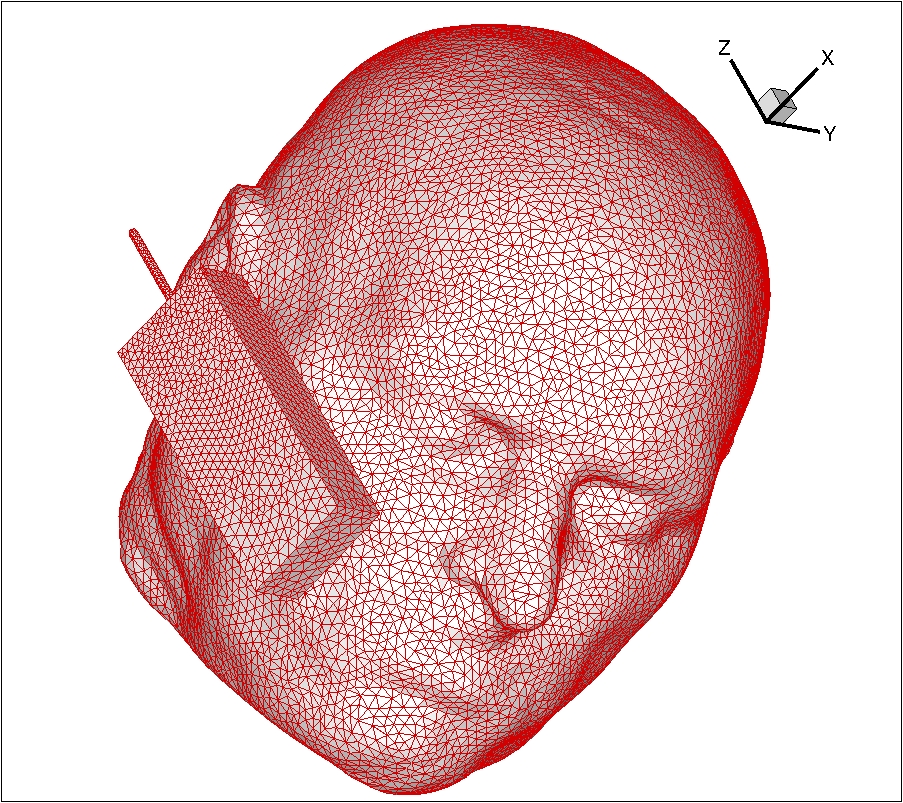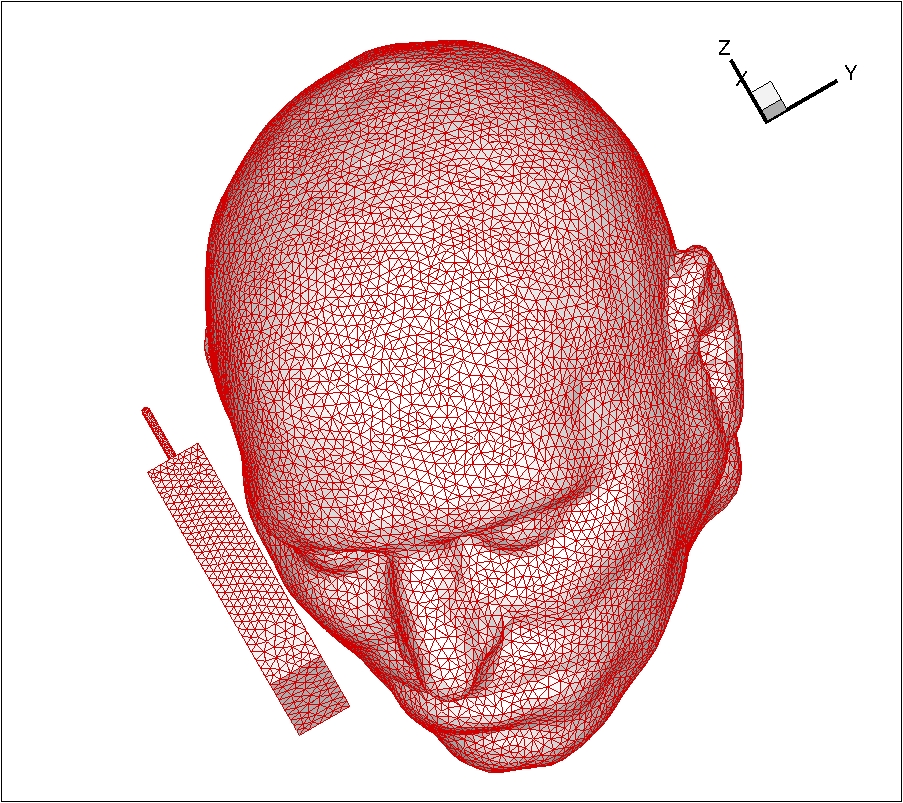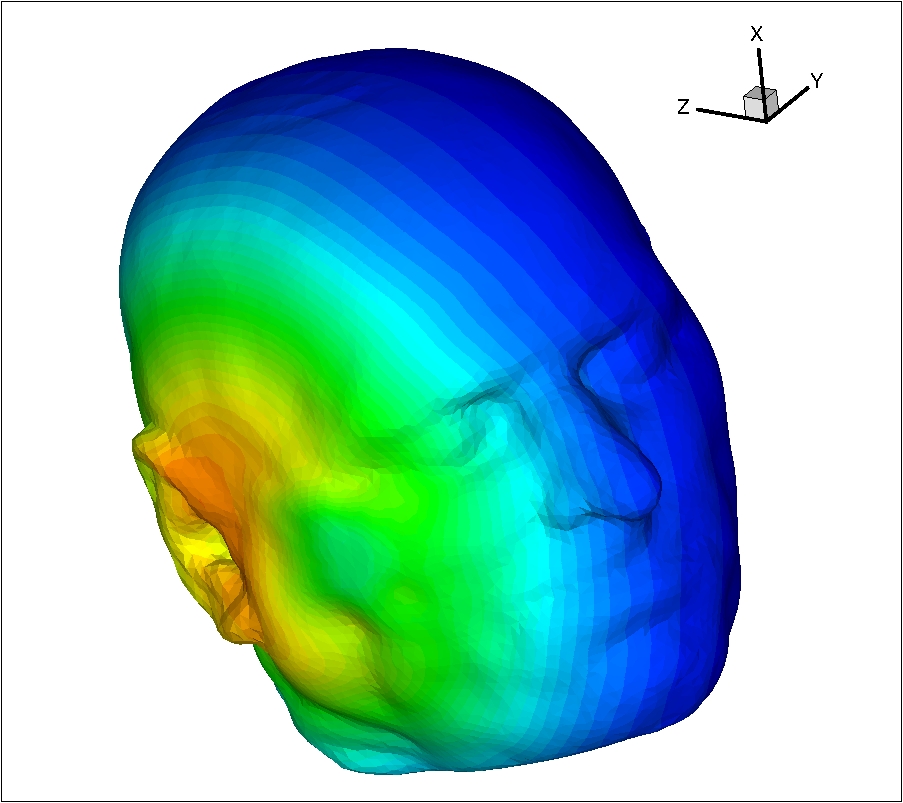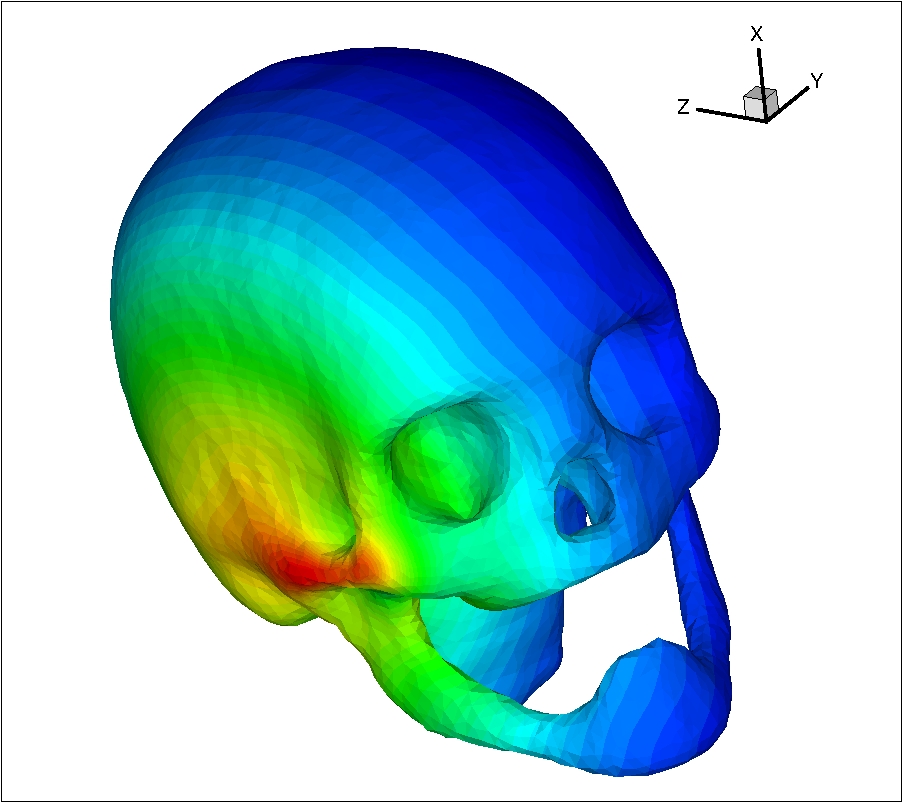Section: Application Domains
Computational electromagnetics
Electromagnetism has found and continues to find applications in a wide range of areas, encompassing both industrial and societal purposes. Applications of current interest include those related to communications (e.g transmission through optical fiber lines), to biomedical devices and health (e.g tomography, power-line safety, etc.), to circuit or magnetic storage design (electromagnetic compatibility, hard disc operation), to geophysical prospecting, and to non-destructive evaluation (e.g crack detection), to name but just a few. Although the principles of electromagnetics are well understood, their application to practical configurations of current interest is significantly complicated and far beyond manual calculation in all but the simplest cases. These complications typically arise from the geometrical characteristics of the propagation medium (irregular shapes, geometrical singularities), the physical characteristics of the propagation medium (heterogeneity, physical dispersion and dissipation) and the characteristics of the sources (wires, etc.). The significant advances in computer technology that have taken place over the last two decades have been such that numerical modeling and computer simulation is nowadays ubiquitous in the study of electromagnetic interactions. The team is actively contributing to the design of advanced numerical methodologies for the solution of the PDE models of electromagnetism with a focus on problems relevant to computational bioelectromagnetics on one hand, and computational nanophotonics on the other hand. In the first case, the objective is to develop numerical methodologies for the simulation of the interaction of electromagnetic waves with biological tissues at microwave frequencies (see Fig. 1 ). Potential applications are concerned with the evaluation of potential sanitary effects of human exposure to electromagnetic waves, or with the design of biomedical devices and systems (i.e. imaging systems, implantable antennas, etc.). In the second case, the target simulations involve the interaction of electromagnetic wave with nanoparticules at optical frequencies. Indeed, nanophotonics is the branch of nanotechnology that deals with the study and behaviour of light and optics at nanometer scale. It directly deals with the optics and is widely used in optic engineering. It includes all the phenomenas that are used in optical sciences for the development of optical devices. Therefore, nanophotonics finds numerous applications such as in optical microscopy, the design of optical switches and electromagnetic chips circuits, trasistor filaments, etc.






